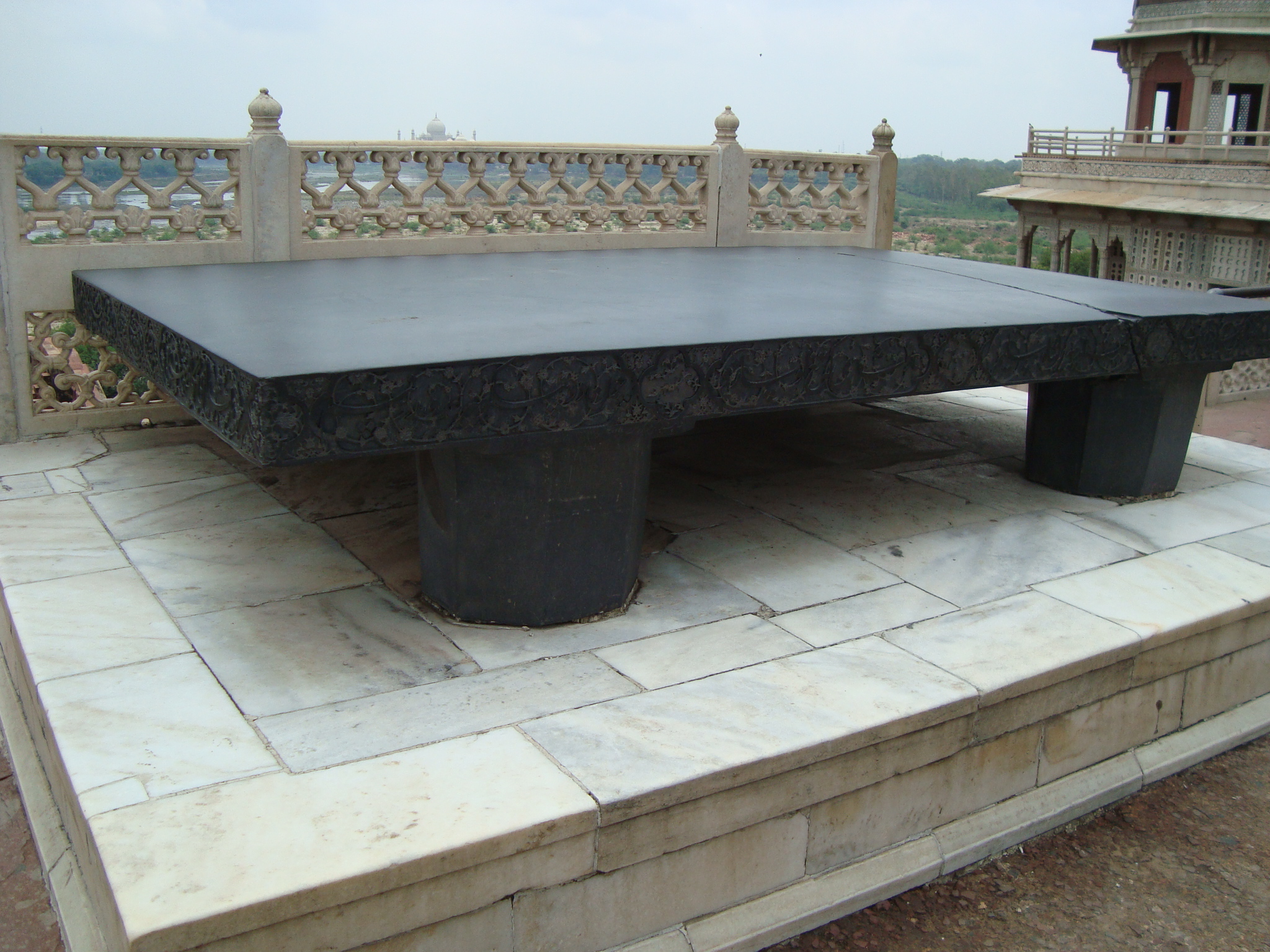Throne of Jahangir on:
[Wikipedia]
[Google]
[Amazon]
 The Throne of Jahangir (Urdu: ''Takht-i-Jahangir'') was built by Mughal emperor
The Throne of Jahangir (Urdu: ''Takht-i-Jahangir'') was built by Mughal emperor
Hat.net
{{coord missing, Uttar Pradesh Individual thrones Agra Fort
Jahangir
Nur-ud-Din Muhammad Salim (30 August 1569 – 28 October 1627), known by his imperial name Jahangir (; ), was the fourth Mughal Emperor, who ruled from 1605 until he died in 1627. He was named after the Indian Sufi saint, Salim Chishti.
Ear ...
(31 August 1569 – 28 October 1627) in 1602 and is located at the '' Diwan-i-Khas'' (hall of private audience) at the Red Fort
The Red Fort or Lal Qila () is a historic fort in Old Delhi, Delhi in India that served as the main residence of the Mughal Emperors. Emperor Shah Jahan commissioned construction of the Red Fort on 12 May 1638, when he decided to shift hi ...
in Agra
Agra (, ) is a city on the banks of the Yamuna river in the Indian state of Uttar Pradesh, about south-east of the national capital New Delhi and 330 km west of the state capital Lucknow. With a population of roughly 1.6 million, Agra is ...
.
History
The throne was built in 1605 inAllahabad
Allahabad (), officially known as Prayagraj, also known as Ilahabad, is a metropolis in the Indian state of Uttar Pradesh.The other five cities were: Agra, Kanpur (Cawnpore), Lucknow, Meerut, and Varanasi (Benares). It is the administrat ...
and kept at the Allahabad Fort
Allahabad Fort is a fort built by the Mughal emperor Akbar at Allahabad, Uttar Pradesh, India in 1583. A stone inscription inside fort describe 1583 as a foundation year. The fort stands on the banks of the Yamuna near its confluence with the r ...
. Even after Jahangir became king when his father, emperor Akbar
Abu'l-Fath Jalal-ud-din Muhammad Akbar (25 October 1542 – 27 October 1605), popularly known as Akbar the Great ( fa, ), and also as Akbar I (), was the third Mughal emperor, who reigned from 1556 to 1605. Akbar succeeded his father, Hum ...
died in 1605, the throne remained there. It was only in 1610, that it was brought from Allahabad to Agra by Jahangir.
There is a crack in this throne. Agra fort was under Jats during 1761 to 1774. Jat Maharaja Jawahar Singhji of Bharatpur cracked it.https://books.google.co.in/books?id=ZtFbBAAAQBAJ&pg=PT87&dq=agra+throne+stone+crack&hl=en&newbks=1&newbks_redir=0&source=gb_mobile_search&sa=X&ved=2ahUKEwjb6q7es8T6AhXfT2wGHSFVCRgQ6AF6BAgFEAM#v=onepage&q=agra%20throne%20stone%20crack&f=false
Structure
The throne is made of touchstone. It is 10 feet 7 inches long, 9 feet 10 inches broad and 6 inches thick. Its octagonal pedestals are each 1 foot 4 inches in height. At the top, it gently slopes from the centre to the sides like the shell of atortoise
Tortoises () are reptiles of the family Testudinidae of the order Testudines (Latin: ''tortoise''). Like other turtles, tortoises have a turtle shell, shell to protect from predation and other threats. The shell in tortoises is generally hard, ...
. Persian inscriptions, dated 1602 are carved, in ornamental cartouche
In Egyptian hieroglyphs, a cartouche is an oval with a line at one end tangent to it, indicating that the text enclosed is a royal name. The first examples of the cartouche are associated with pharaohs at the end of the Third Dynasty, but the fea ...
s on its sides, in praise of Jahangir, whom they state as ''Shah
Shah (; fa, شاه, , ) is a royal title that was historically used by the leading figures of Iranian monarchies.Yarshater, EhsaPersia or Iran, Persian or Farsi, ''Iranian Studies'', vol. XXII no. 1 (1989) It was also used by a variety of ...
'' and ''Sultan
Sultan (; ar, سلطان ', ) is a position with several historical meanings. Originally, it was an Arabic abstract noun meaning "strength", "authority", "rulership", derived from the verbal noun ', meaning "authority" or "power". Later, it ...
''. This amounted to defiance of Akbar
Abu'l-Fath Jalal-ud-din Muhammad Akbar (25 October 1542 – 27 October 1605), popularly known as Akbar the Great ( fa, ), and also as Akbar I (), was the third Mughal emperor, who reigned from 1556 to 1605. Akbar succeeded his father, Hum ...
, who was at that time alive and on the throne. When the throne was finally brought to Agra
Agra (, ) is a city on the banks of the Yamuna river in the Indian state of Uttar Pradesh, about south-east of the national capital New Delhi and 330 km west of the state capital Lucknow. With a population of roughly 1.6 million, Agra is ...
, Jahangir had two inscriptions carved on top of the two western pedestals, stating that he had been only the heir to the throne, and that he had assumed the title of '' Nuruddin Muhammad Jahangir Badshah'' (Badshah Jahangir), only after his righteous accession.
References
Hat.net
{{coord missing, Uttar Pradesh Individual thrones Agra Fort